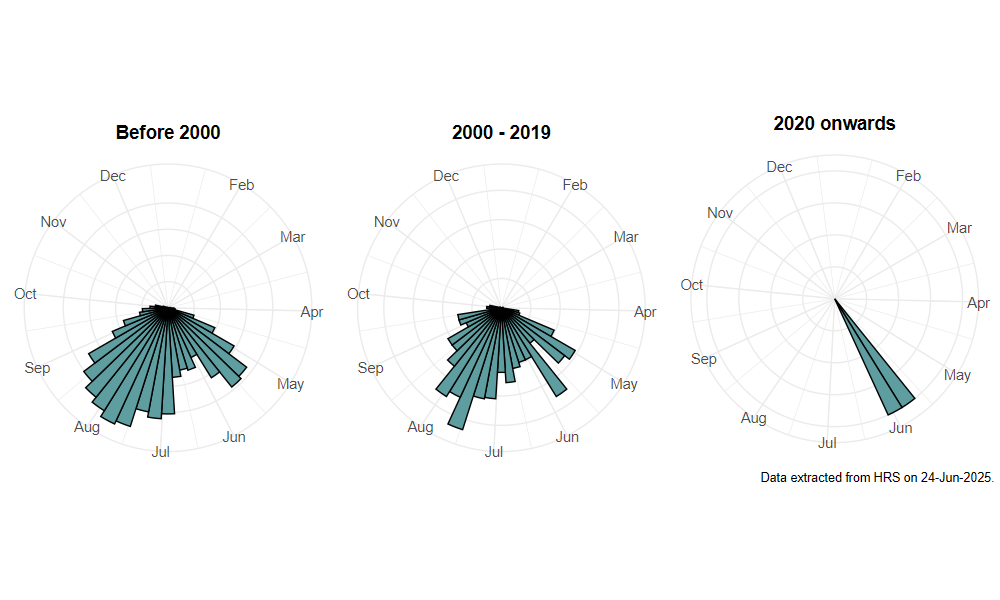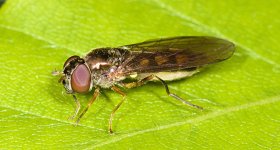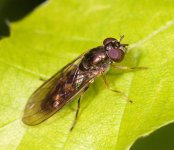Melanostoma mellinum (Linnaeus, 1758)
Identification
Identification difficulty = 5. ![]()
![]() according to Ball & Morris, 20241
according to Ball & Morris, 20241
Synonymy
A very variable species. It was rumoured to have been split into up to five species by revisionary work in Europe, but this has yet to be published and recent DNA analysis did not support this.
Biology
The larva is aphidophagous and has been reared on a wide range of aphid species in the laboratory. However, despite the abundance of adults, larvae have rarely been found in the wild. Rotheray (1993) suggests they are general predators of aphids found amongst leaf litter. It appears to be double brooded, with two peaks in adult abundance in May and again in mid-summer, but it can be found throughout most of the season from March through to November.
Flight period
The following plots show the number of unique records per week excluding those reported to be of immature stages.

Distribution
Widely distributed and abundant in all types of grassland including moorland to high altitudes.

Trends
The following plots show the Frescalo TFactor vs year and a map of the rescaled frequency (all records) for the species.
-
Ball, S., & Morris, R. (2024). Hoverflies of Britain and Ireland. WILDGuides (3rd ed.). Oxford: Princeton University Press. ↩

